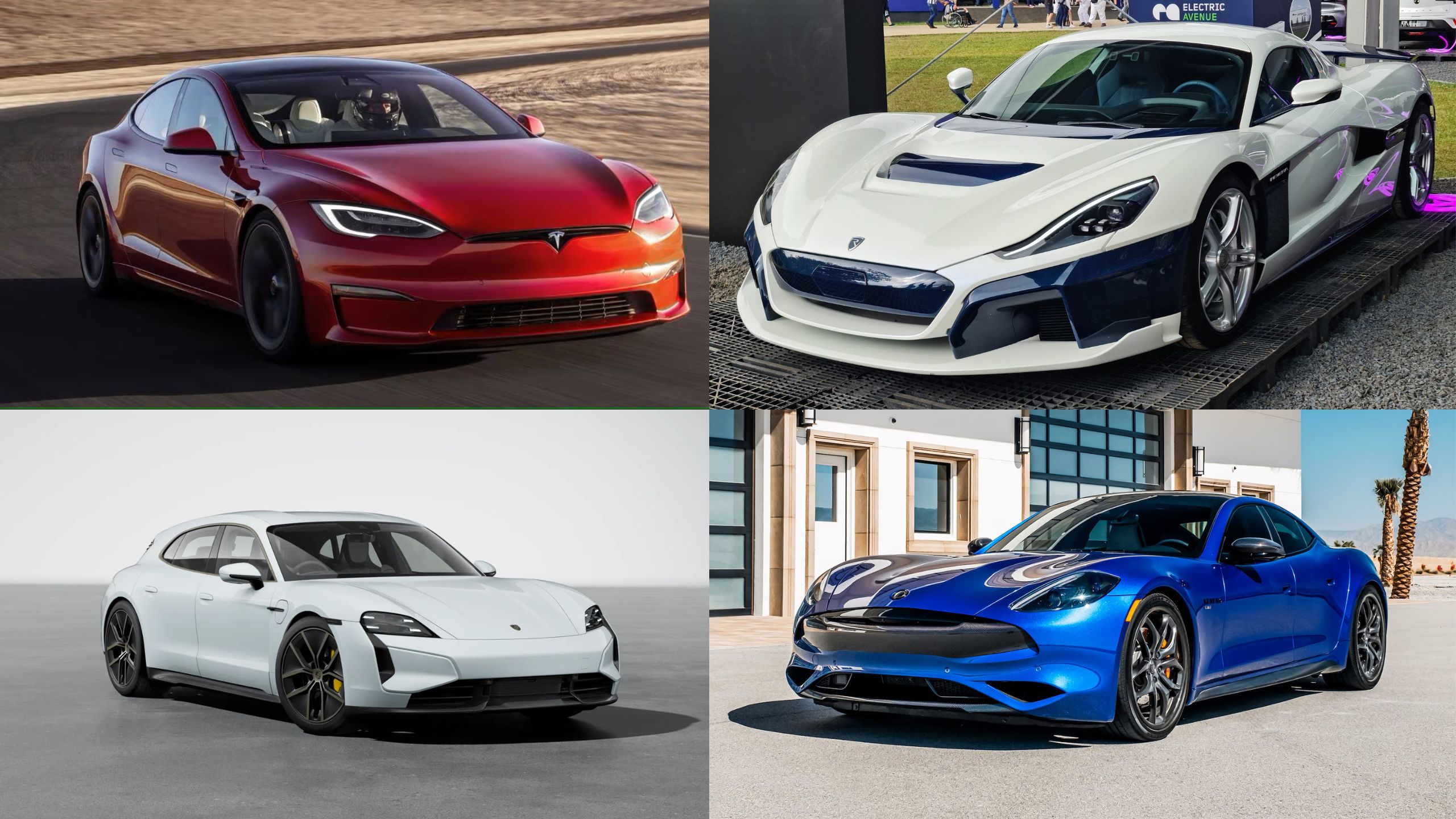The automotive world is undergoing a revolutionary transformation, with electric sports cars emerging as the new frontier of performance and sustainable technology.
No longer confined to practical transportation, electric vehicles (EVs) are now capturing the hearts of automotive enthusiasts and hobbyists worldwide.
These cutting-edge machines are shattering long-held perceptions about electric performance, delivering breathtaking acceleration, stunning design, and environmental consciousness in one electrifying package.
The convergence of advanced battery technologies, innovative engineering, and a growing commitment to reducing carbon emissions has sparked a renaissance in sports car design.
Manufacturers from established automotive giants to nimble startup companies are investing heavily in electric performance vehicles, pushing the boundaries of what was once thought possible.
Hobbyists are particularly drawn to these vehicles not just for their ecological benefits, but for their instant torque, precise handling, and the potential for customization and modification that the electric powertrain offers.
From lightning-fast acceleration that outpaces traditional combustion engine supercars to sophisticated regenerative braking systems and advanced connectivity features, these electric sports cars represent more than just a mode of transportation.
They are rolling showcases of technological innovation, symbols of a shifting automotive culture that values performance, sustainability, and cutting-edge design.
As battery technologies continue to improve and charging infrastructure expands, these 12 electric sports cars are leading the charge into an exciting, electrified future of automotive performance.
1. Rimac Nevera
The Rimac Nevera represents the pinnacle of electric hypercar engineering, emerging from Croatia as a testament to innovative electric vehicle design. This all-electric marvel is not just a car, but a technological masterpiece that redefines performance expectations.
Powered by four individual electric motors one for each wheel the Nevera delivers an unprecedented level of precision and control that traditional sports cars can only dream of achieving.
With a staggering 1,914 horsepower and the ability to accelerate from 0 to 60 mph in just 1.85 seconds, the Nevera obliterates conventional performance metrics.
Its advanced battery technology, developed in-house by Rimac, features a unique H-shaped battery pack integrated directly into the car’s carbon fiber monocoque chassis.
This design provides exceptional rigidity while maximizing weight distribution and lowering the car’s center of gravity.
The vehicle’s exterior is a masterclass in aerodynamic design, with active aerodynamic elements that can adjust in real time to optimize performance and stability. The carbon fiber body is not just about looks every curve and line serves a functional purpose, channeling air with remarkable efficiency.
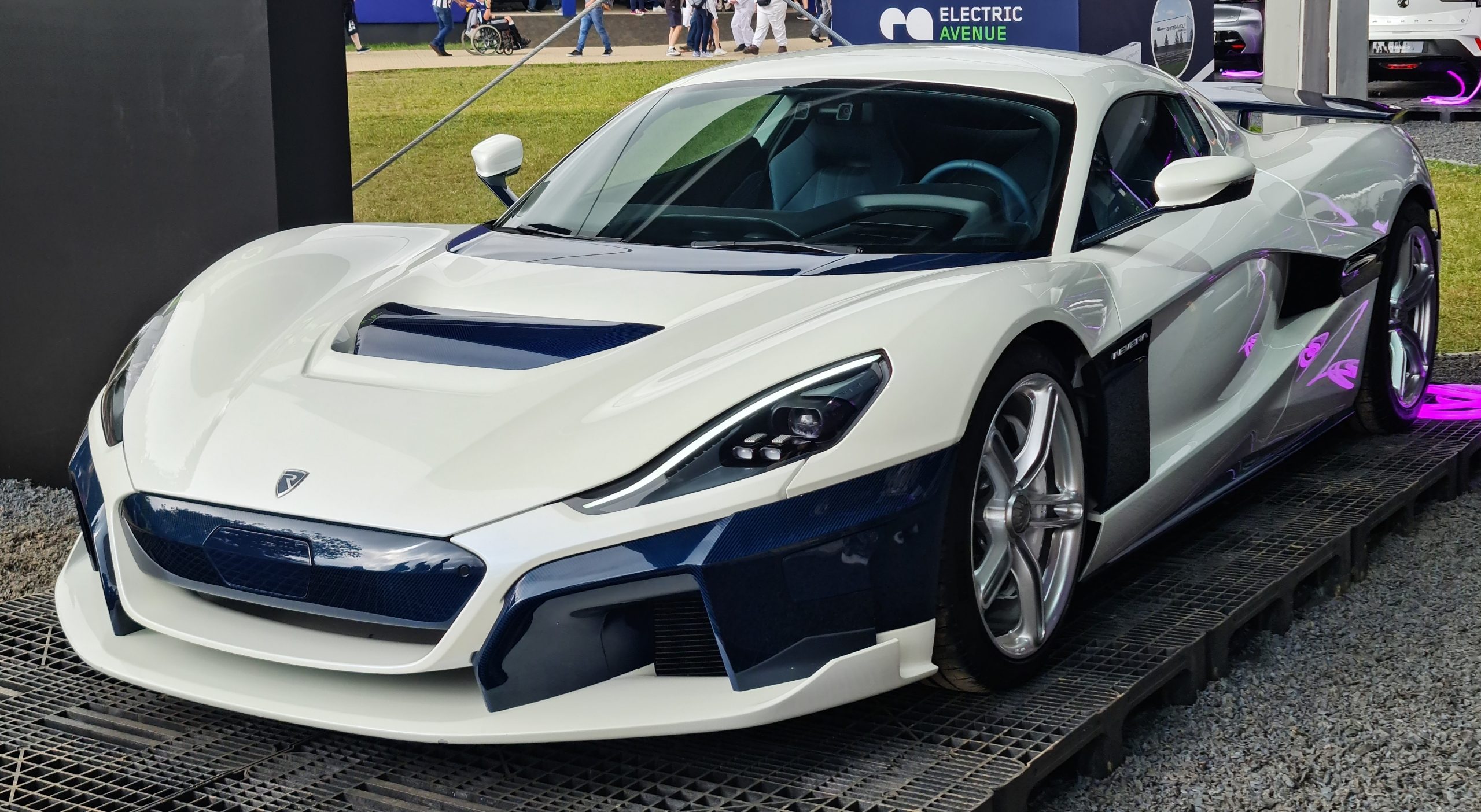
Its active rear wing can generate up to 326 kg of downforce, ensuring the car remains planted at extreme speeds. Inside, the Nevera blends cutting-edge technology with luxurious craftsmanship.
A sophisticated driving mode system allows owners to customize their driving experience, with modes ranging from Comfort to Track, each dramatically altering the car’s character.
The interior features a fully digital cockpit with advanced telemetry systems that can record and analyze driving performance, appealing directly to automotive enthusiasts and track-day participants.
With a limited production run of just 150 units, the Rimac Nevera is more than a car it’s a collector’s item and a statement about the future of high-performance electric vehicles.
Priced at approximately $2.4 million, it represents the absolute pinnacle of electric automotive engineering, challenging preconceptions about electric vehicle performance and pushing the boundaries of what’s possible in automotive design.
2. Porsche Taycan Turbo S
The Porsche Taycan Turbo S embodies the perfect fusion of Porsche’s legendary sports car heritage with cutting-edge electric vehicle technology.
Unlike many electric vehicles that prioritize range over performance, the Taycan was designed from the ground up to deliver the quintessential Porsche driving experience just without internal combustion.
At the heart of the Taycan Turbo S is an innovative 800-volt architecture that sets it apart from most electric vehicles. This advanced system allows for incredibly fast charging up to 270 kW on compatible DC fast-charging stations and enables repeated high-performance launches without degrading battery performance.
The dual-motor all-wheel-drive system provides extraordinary traction and acceleration, propelling the car from 0 to 60 mph in a mere 2.6 seconds.
Porsche’s commitment to driving dynamics is evident in every aspect of the Taycan’s design. The adaptive air suspension with three-chamber technology allows for remarkable flexibility, providing both exceptional comfort and track-ready handling.
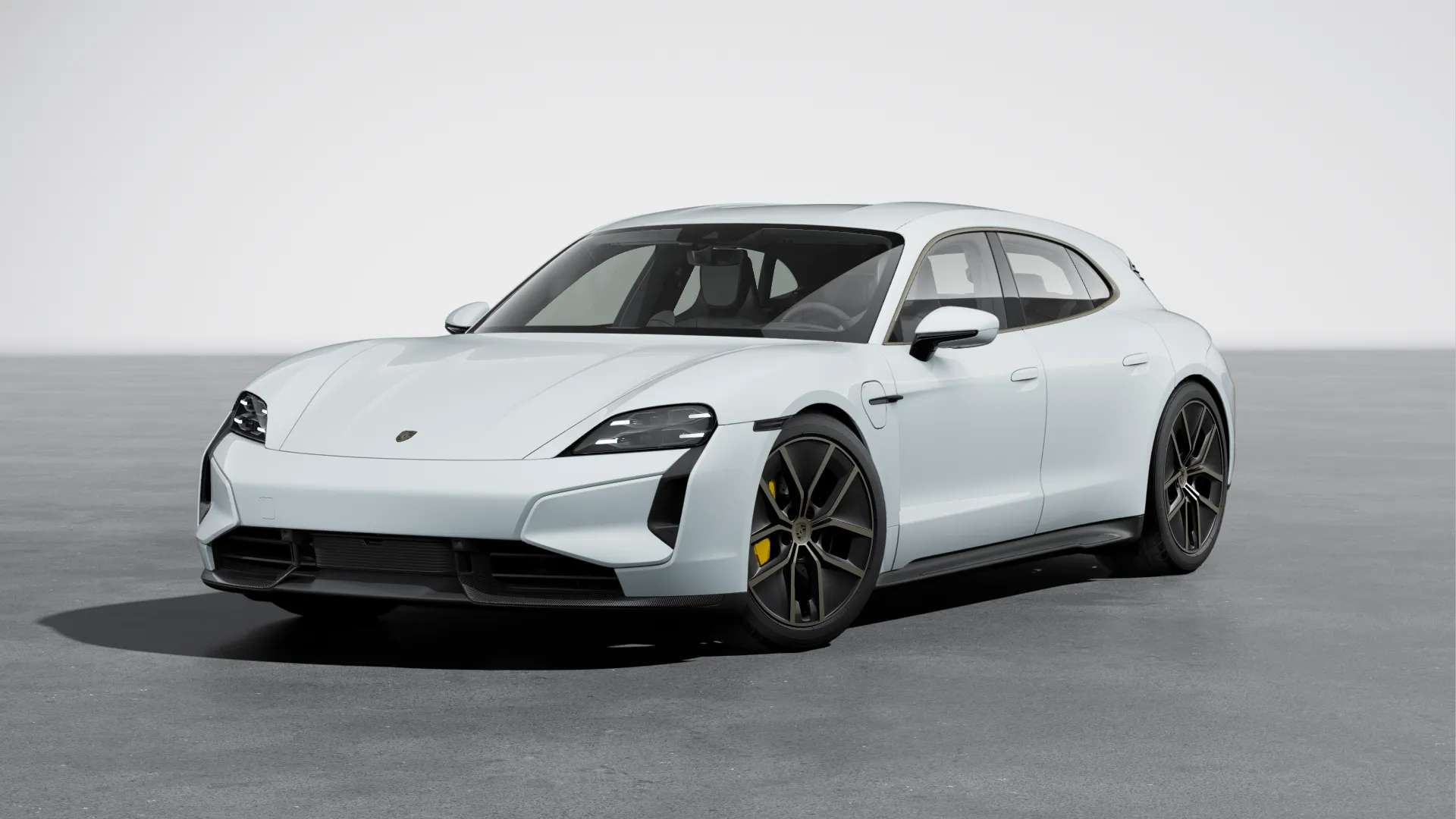
The car’s low center of gravity, achieved by mounting the battery pack on the floor, ensures cornering capabilities that rival and in many cases exceed traditional sports cars.
The interior reflects Porsche’s dedication to both luxury and technology. A curved digital instrument cluster, an optional passenger display, and an intuitive touchscreen infotainment system create a futuristic cockpit.
Optional packages allow extensive customization, from performance-focused configurations to luxury-oriented trims that showcase Porsche’s renowned craftsmanship.
Despite being an electric vehicle, the Taycan Turbo S maintains strong connections to Porsche’s motorsport heritage. Its regenerative braking system developed using knowledge from Formula E racing, provides exceptional energy recovery while maintaining a sports car-like brake feel.
The car can recuperate up to 265 kW of energy during deceleration, significantly extending its effective range and performance envelope.
With a starting price of around $187,000, the Taycan Turbo S is positioned as a premium electric performance vehicle that proves electric cars can be just as exciting if not more so than their combustion-engine counterparts. It represents Porsche’s bold statement that the future of high-performance driving is electric.
3. Tesla Model S Plaid
The Tesla Model S Plaid represents a paradigm shift in electric vehicle performance, effectively demolishing preconceived notions about electric car capabilities.
Introduced as the flagship performance model in Tesla’s lineup, the Plaid pushes the boundaries of what’s possible in an electric sedan, transforming from a practical family car into a hypercar-killer that has redefined automotive performance metrics.
At the core of the Model S Plaid’s extraordinary performance is its revolutionary powertrain. Featuring three high-performance electric motors one in the front and two in the rear the vehicle generates an astonishing 1,020 horsepower.
This incredible power enables the car to rocket from 0 to 60 mph in a mind-bending 1.99 seconds, making it one of the fastest production cars ever created.
The instantaneous torque delivery, a hallmark of electric vehicles, provides acceleration that feels almost supernatural, pinning passengers to their seats with unprecedented force.
The advanced thermal management system is a technological marvel, featuring a cutting-edge cooling architecture that allows for repeated high-performance launches without performance degradation.
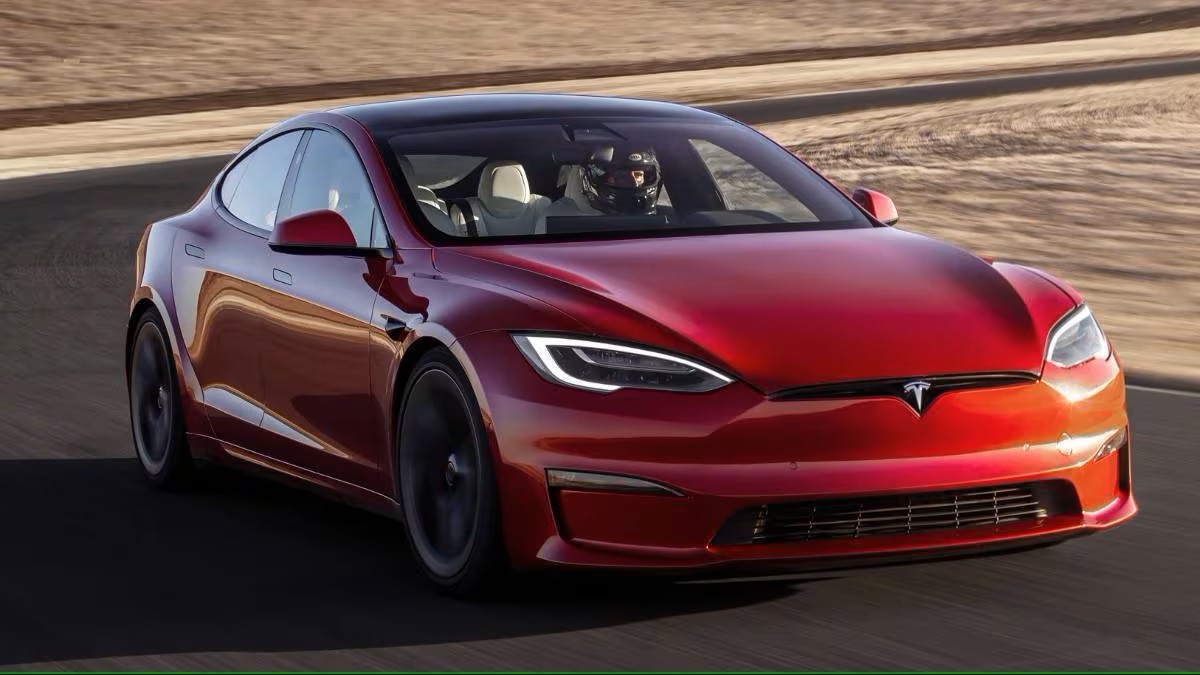
Carbon-sleeved rotors and a heat pump system ensure optimal performance across various driving conditions, from track days to daily commutes.
The low center of gravity, achieved by mounting the battery pack along the car’s floor, provides exceptional handling characteristics that challenge traditional sports car design philosophies.
Interior design reflects Tesla’s minimalist approach to technology, with a revolutionary yoke steering wheel and a 17-inch central touchscreen that controls virtually every aspect of the vehicle.
The cabin features aerospace-inspired design elements, including a redesigned center console and premium materials that blend luxury with technological sophistication.
The car’s gaming capabilities, including the ability to play high-end video games and run complex entertainment systems, appeal to tech-savvy enthusiasts.
Perhaps most impressive is the Plaid’s ability to maintain its performance credentials while offering practical range. With an EPA-estimated range of around 396 miles, it demonstrates that high performance and long-distance capability are not mutually exclusive.
The advanced regenerative braking system and comprehensive charging network further enhance its real-world usability.
Priced at approximately $130,000, the Tesla Model S Plaid is more than just a car it’s a statement about the future of automotive performance.
It challenges traditional automotive engineering, proving that electric vehicles can not only compete with but outperform conventional high-performance sports cars.
4. Lucid Air Dream Edition
The Lucid Air Dream Edition emerges as a groundbreaking electric luxury sedan that pushes the boundaries of electric vehicle technology and performance.
Developed by a team of engineers and designers with deep roots in the automotive and technology industries, the Lucid Air represents a holistic approach to electric vehicle design that prioritizes efficiency, performance, and luxurious comfort.
At the heart of the Dream Edition is an extraordinary powertrain that showcases Lucid’s engineering prowess. The vehicle offers two configurations: a Performance model generating 1,111 horsepower and a Range model optimized for maximum efficiency.
The Performance variant can accelerate from 0 to 60 mph in a mere 2.5 seconds, while the Range version can travel an EPA-certified 520 miles on a single charge a remarkable achievement in the electric vehicle world.
Lucid’s proprietary electric motor technology, which the company calls the Lucid Electric Advanced Platform (LEAP), represents a significant technological breakthrough.
These motors are significantly more compact and efficient than competitors, allowing for unprecedented power density.
The advanced battery architecture features industry-leading energy efficiency, with over 900 individual battery cells arranged in a cutting-edge configuration that maximizes both performance and range.
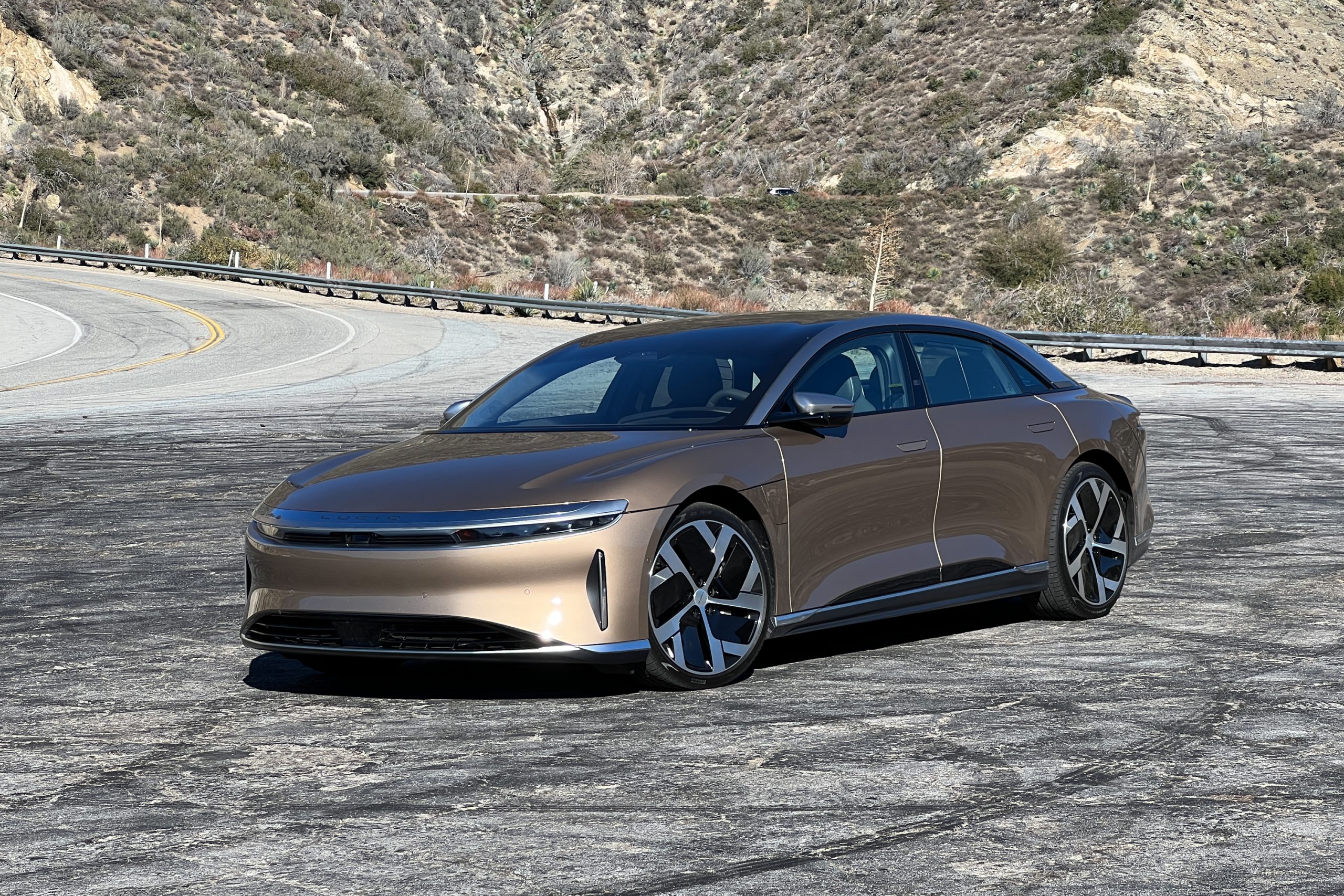
The interior of the Lucid Air Dream Edition redefines luxury automotive design. A massive 34-inch curved Glass Cockpit display spans the dashboard, providing an immersive digital experience.
The cabin features exceptional attention to detail, with materials sourced from sustainable and premium suppliers.
Advanced air purification systems, ambient lighting, and zero-gravity inspired seating positions create an environment that feels more like a first-class airplane cabin than a traditional automobile.
Aerodynamic design plays a crucial role in the Air’s performance. With a drag coefficient of just 0.21, it’s one of the most aerodynamically efficient production cars ever created.
This efficiency contributes not only to its impressive range but also to its stability and performance at high speeds.
With a price tag starting around $170,000, the Lucid Air Dream Edition positions itself as a halo product that demonstrates the incredible potential of electric vehicle technology.
It’s not just a car, but a technological statement that challenges traditional automotive engineering paradigms and offers a look into the future of high-performance, luxury electric transportation.
Also Read: 12 Minivans Equipped With the Best Child Safety Features
5. Lotus Evija
The Lotus Evija represents a radical departure from Lotus’s traditional lightweight sports car philosophy, embracing full-electric hypercar technology while maintaining the brand’s core principles of exceptional engineering and performance.
As the first all-electric hypercar from the iconic British manufacturer, the Evija is a bold statement of Lotus’s commitment to the future of high-performance automotive design.
Engineered with an unprecedented level of technological sophistication, the Evija boasts a powertrain that defies conventional expectations.
Featuring four independent electric motors one for each wheel the hypercar generates a staggering 1,972 horsepower, making it one of the most powerful production cars ever created.
This revolutionary quad-motor setup allows for unprecedented torque vectoring, providing extraordinary handling capabilities that redefine the concept of all-wheel-drive performance.
The car’s structural design is a masterpiece of engineering innovation. A full carbon fiber monocoque chassis weighs just 129 kg, showcasing Lotus’s legendary expertise in lightweight construction.
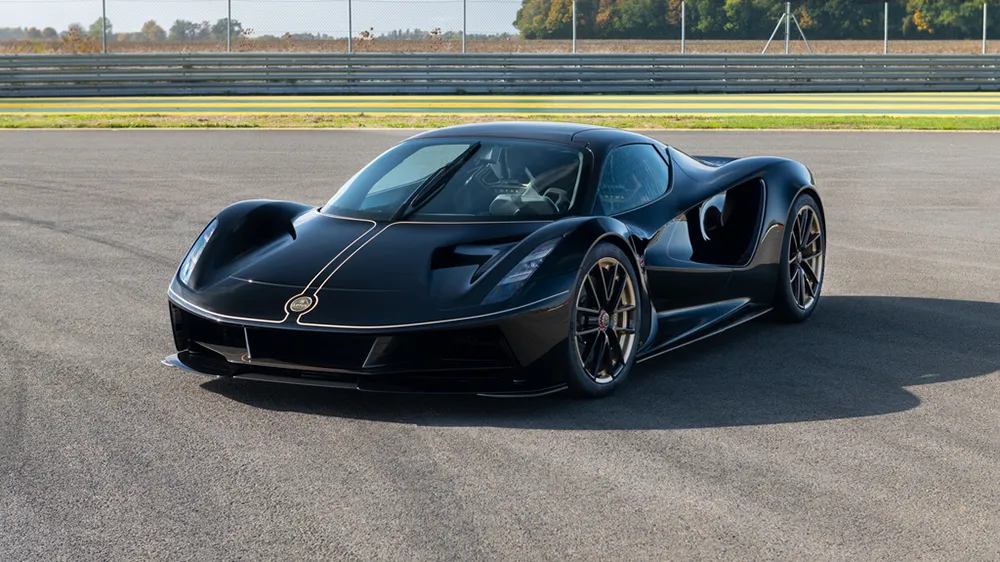
The battery pack is strategically mounted behind the driver, creating an optimal weight distribution that ensures exceptional handling characteristics.
Despite its incredible power, the Evija maintains a dry weight of just 1,680 kg, a testament to Lotus’s commitment to performance through weight reduction.
Aerodynamics plays a crucial role in Evija’s design. The car features active aerodynamic elements that can dynamically adjust to optimize performance and stability.
A massive rear wing and intricate ground effect channels provide significant downforce, ensuring the car remains planted at extreme speeds.
The exterior design is a perfect blend of aggressive performance styling and aerodynamic efficiency, with dramatic venturi tunnels running through the rear of the car that creates a visually striking and functionally advanced appearance.
The interior of the Evija is equally revolutionary, featuring a minimalist cockpit that feels more like a fighter jet than a traditional sports car. A central driving position reminiscent of Formula One racing cars provides an unparalleled driving experience.
The digital instrumentation is fully customizable, with a design that prioritizes critical performance information while maintaining a futuristic aesthetic.
With a limited production run of just 130 units and a price tag of approximately $2.3 million, the Lotus Evija is more than just a car it’s a collector’s item and a technological masterpiece.
It represents Lotus’s vision of electric performance, challenging the conventional understanding of what an electric hypercar can be.
6. Pininfarina Battista
The Pininfarina Battista emerges as a breathtaking electric hypercar that represents the pinnacle of Italian automotive design and electric performance.
Created by the legendary design house Pininfarina, known for designing some of the most beautiful cars in automotive history, the Battista is a pure electric hypercar that seamlessly blends artistic design with cutting-edge technological innovation.
At the core of the Battista is a revolutionary electric powertrain developed in collaboration with Rimac, another leader in electric vehicle technology.
The car features four independent electric motors one for each wheel generating an incredible 1,900 horsepower and 2,300 Nm of torque.
This extraordinary power enables the Battista to accelerate from 0 to 60 mph in less than 2 seconds, putting it in the same performance bracket as the world’s most extreme hypercars.
The battery system is equally impressive, featuring a 120 kWh lithium-ion pack that provides an estimated range of 310 miles.
This is remarkable for a hypercar of this performance caliber, demonstrating that electric vehicles can offer both extreme performance and practical usability.
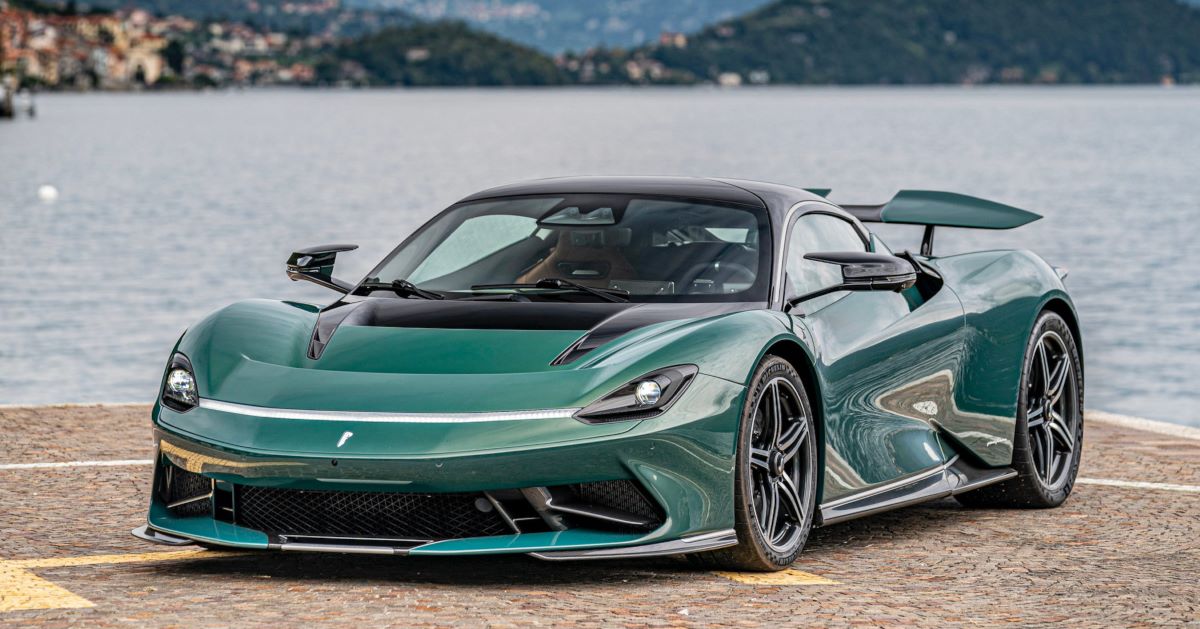
The advanced battery management system ensures consistent performance across various driving conditions, from track use to long-distance touring.
Pininfarina’s design philosophy is evident in every aspect of the Battista’s exterior. The car’s lines are sculpted with mathematical precision, creating a form that is simultaneously aggressive and elegant.
Carbon fiber is used extensively, not just for weight reduction but as a design element that showcases the car’s technological sophistication.
The aerodynamic design is both functional and beautiful, with active aerodynamic elements that dynamically adjust to optimize performance and efficiency.
The interior continues the theme of technological elegance, featuring a driver-centric cockpit with a minimalist design that prioritizes critical information and user experience.
A central digital display provides comprehensive vehicle information, while the steering wheel integrates critical controls for maximum driver engagement. The use of sustainable materials and advanced technologies reflects Pininfarina’s commitment to both luxury and environmental consciousness.
Limited to just 150 units worldwide and priced at approximately $2.2 million, the Pininfarina Battista is more than a car it’s a work of art, a technological showcase, and a look into the future of high-performance electric vehicles. It represents the perfect fusion of Italian design heritage and cutting-edge electric vehicle technology.
7. NIO EP9
The NIO EP9 stands as a groundbreaking electric supercar that emerged from China’s most innovative electric vehicle manufacturer, challenging global perceptions about electric performance and technological innovation.
Developed as a showcase of NIO’s engineering capabilities, the EP9 has established itself as a remarkable achievement in electric hypercar design, setting multiple speed records and demonstrating the immense potential of electric vehicle technology.
Engineered with an extraordinary focus on performance, the NIO EP9 features four high-performance electric motors one at each wheel generating a combined output of 1,360 horsepower.
This revolutionary powertrain enables the car to accelerate from 0 to 60 mph in an astonishing 2.7 seconds, with a top speed of 194 mph.
The quad-motor configuration provides unprecedented torque vectoring capabilities, allowing for exceptional handling and precision that surpasses traditional combustion-engine supercars.
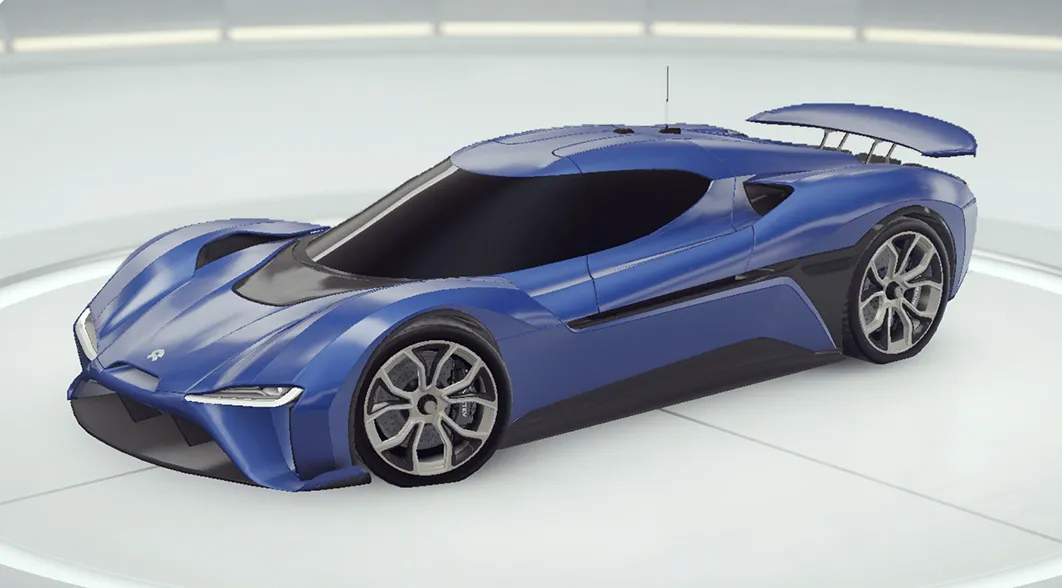
The battery technology is equally impressive, featuring a modular design that allows for rapid battery swapping a unique approach that addresses one of the primary concerns of electric vehicle owners.
Each battery pack can be completely replaced in just 8 minutes, effectively eliminating charging time concerns.
The car can achieve a range of approximately 265 miles on a single charge, with the ability to swap batteries for extended driving scenarios.
Aerodynamics plays a crucial role in the EP9’s design, with active aerodynamic elements that dynamically adjust to optimize performance and stability.
The carbon fiber monocoque chassis is designed to provide exceptional rigidity while minimizing weight, resulting in a total vehicle weight of just 1,735 kg.
The car’s design is not just about performance but also about pushing the boundaries of what’s possible in electric vehicle engineering.
The interior of the NIO EP9 reflects a minimalist approach to performance-oriented design. A fighter jet-inspired cockpit features a fully digital instrument cluster, with controls and displays that prioritize critical driving information.
The racing-inspired seats are designed to provide maximum support during high-performance driving while maintaining a level of comfort unexpected in such an extreme performance vehicle.
Perhaps most notably, the NIO EP9 has proven its performance credentials by setting multiple track records. It completed a lap of the Nürburgring Nordschleife in just 7 minutes and 5 seconds, demonstrating that electric vehicles can compete at the highest levels of motorsport performance.
With only 16 units produced and a price tag of approximately $1.2 million, the NIO EP9 is more than a car it’s a technological statement that challenges conventional automotive engineering.
8. Aspark Owl
The Aspark Owl emerges as Japan’s most extreme electric hypercar, representing a bold statement about the potential of electric vehicle performance.
Developed by the small Japanese engineering firm Aspark, the Owl has garnered global attention for its extraordinary acceleration capabilities and cutting-edge design philosophy that pushes the boundaries of electric automotive technology.
At the heart of the Owl’s performance is an extraordinary electric powertrain that generates an incredible 1,980 horsepower.
The car is capable of acceleration that defies belief, reaching 0 to 60 mph in a mind-bending 1.69 seconds making it potentially the fastest-accelerating production car.
Four electric motors, one at each wheel, provide exceptional power delivery and precise torque vectoring that ensures extraordinary handling characteristics.
The car’s design is a testament to extreme engineering and aerodynamic efficiency. Constructed almost entirely from carbon fiber, the Owl weighs just 1,620 kg, remarkable for a hypercar with such extreme performance capabilities.
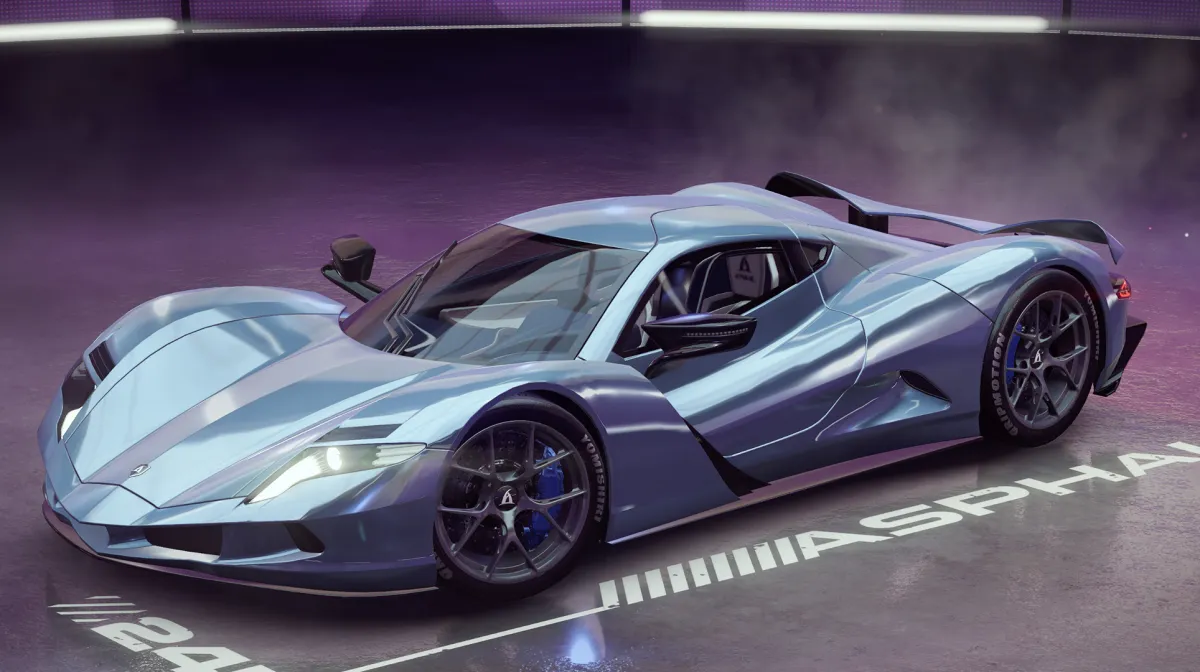
The body design features dramatic aerodynamic elements that provide significant downforce, including an active rear wing and intricate ground effect channels that optimize airflow and stability at high speeds.
Battery technology represents another area of significant innovation for the Aspark Owl. The hypercar features a 64 kWh solid-state battery pack that provides an estimated range of 280 miles impressive for a vehicle focused on extreme performance.
Solid-state battery technology promises faster charging times and improved energy density compared to traditional lithium-ion batteries, representing a significant technological leap in electric vehicle design.
The interior of the Owl is as extreme as its exterior, featuring a minimalist cockpit that prioritizes performance and driver engagement.
A digital instrument cluster provides critical driving information, while the racing-inspired seats are designed to provide maximum support during high-performance driving.
The use of advanced materials and minimalist design principles reflects the car’s focus on pure performance.
Limited to just 50 units worldwide and priced at approximately $3.2 million, the Aspark Owl is more than a car it’s a technological statement that challenges our understanding of electric vehicle performance.
It represents the pinnacle of what’s possible when engineering ambition meets electric vehicle technology, proving that electric hypercars can not only compete with but potentially surpass traditional combustion-engine performance vehicles.
9. Automobili Estrema Fulminea
The Automobili Estrema Fulminea represents a bold entry into the electric hypercar market from an innovative Italian automotive startup.
Designed to challenge established performance paradigms, the Fulminea embodies the perfect fusion of cutting-edge electric vehicle technology and the passionate automotive design heritage of Italy.
This extraordinary machine is more than just a car it’s a technological manifesto that showcases the potential of electric performance vehicles.
At the core of the Fulminea’s performance is a revolutionary powertrain that pushes the boundaries of electric vehicle engineering.
The car features four electric motors one for each wheel generating a combined output of 1,100 horsepower.
This quad-motor configuration allows for unprecedented torque vectoring, providing extraordinary handling precision that surpasses traditional high-performance vehicles.
The acceleration is equally impressive, with the ability to sprint from 0 to 60 mph in just 2.2 seconds, placing it among the world’s fastest production vehicles.
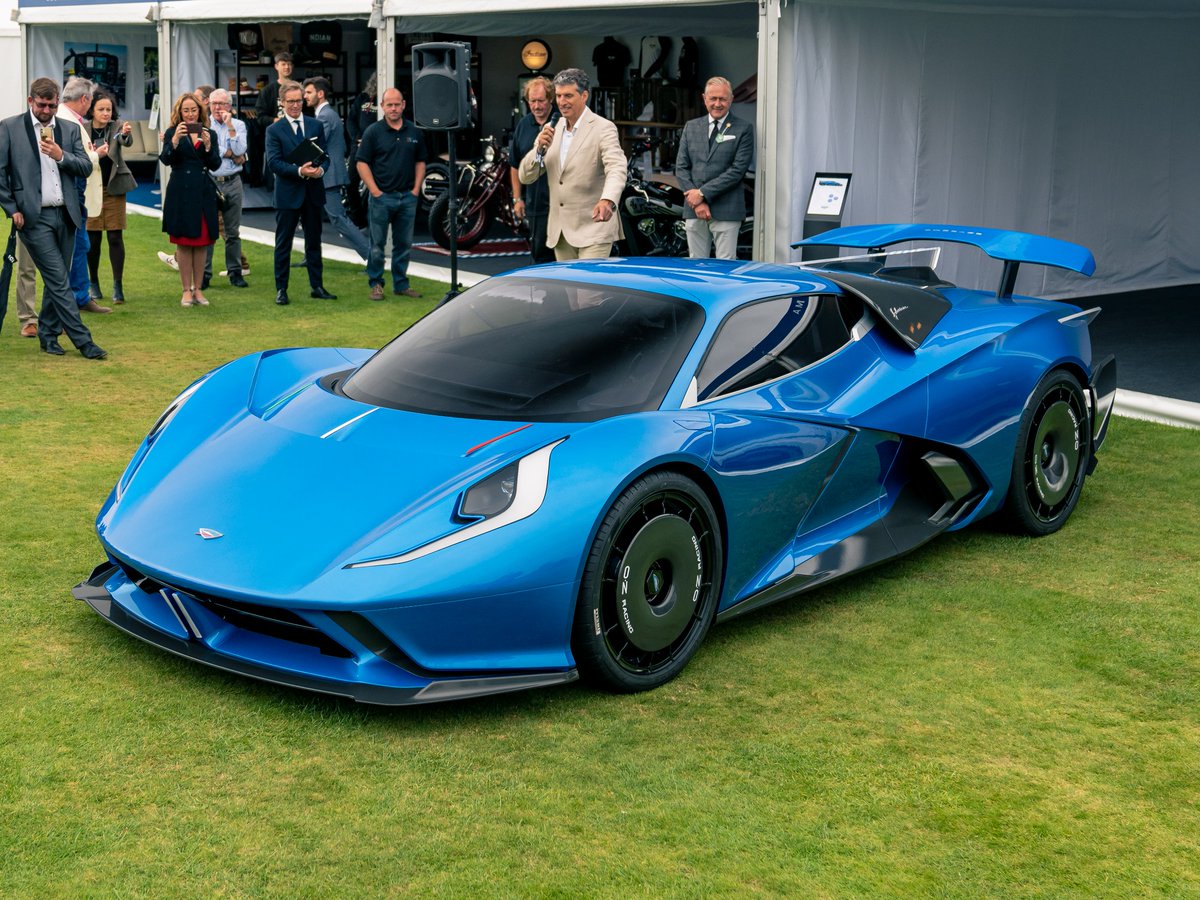
The battery technology represents a significant technological breakthrough. Automobili Estrema has developed a unique hybrid battery system that combines traditional lithium-ion cells with innovative ultra-capacitor technology.
This approach provides several key advantages, including extremely rapid charging capabilities and the ability to deliver consistent power output across various driving conditions.
The total battery capacity enables an estimated range of 320 miles, demonstrating that high performance and practical usability can coexist.
Aerodynamic design is a crucial element of the Fulminea’s engineering philosophy. The carbon fiber monocoque chassis is a masterpiece of lightweight construction, with every curve and line carefully sculpted to optimize airflow and generate maximum downforce.
Active aerodynamic elements dynamically adjust to provide optimal stability and performance at different speeds, creating a car that feels equally at home on a racetrack or a scenic mountain road.
The interior of the Fulminea reflects a minimalist approach to performance-oriented design. A driver-centric cockpit features a fully digital instrument cluster that provides critical performance information with exceptional clarity.
The use of sustainable materials and advanced manufacturing techniques demonstrates Automobili Estrema’s commitment to both performance and environmental consciousness.
Racing-inspired seats provide maximum support while maintaining a level of comfort unexpected in such an extreme performance vehicle.
Limited to just 61 units worldwide and priced at approximately $2 million, the Automobili Estrema Fulminea is more than a car it’s a collector’s item and a technological showcase.
The number 61 is a tribute to the year 1961, a significant moment in Italian automotive history, adding a layer of cultural significance to this extraordinary electric hypercar.
10. Maserati MC20 Folgore
The Maserati MC20 Folgore represents the storied Italian manufacturer’s bold leap into the electric sports car market, seamlessly blending Maserati’s legendary performance heritage with cutting-edge electric vehicle technology.
As Maserati’s first all-electric supercar, the Folgore (which means “lightning” in Italian) is a testament to the brand’s ability to evolve while maintaining its core performance DNA.
Powered by an advanced electric powertrain, the MC20 Folgore features three electric motors two in the rear and one in the front generating a combined output of approximately 1,200 horsepower.
This sophisticated powertrain enables the car to accelerate from 0 to 60 mph in less than 2.5 seconds, delivering performance that matches and often exceeds traditional combustion-engine supercars.
The strategic placement of motors allows for exceptional weight distribution and handling characteristics that are quintessentially Maserati.
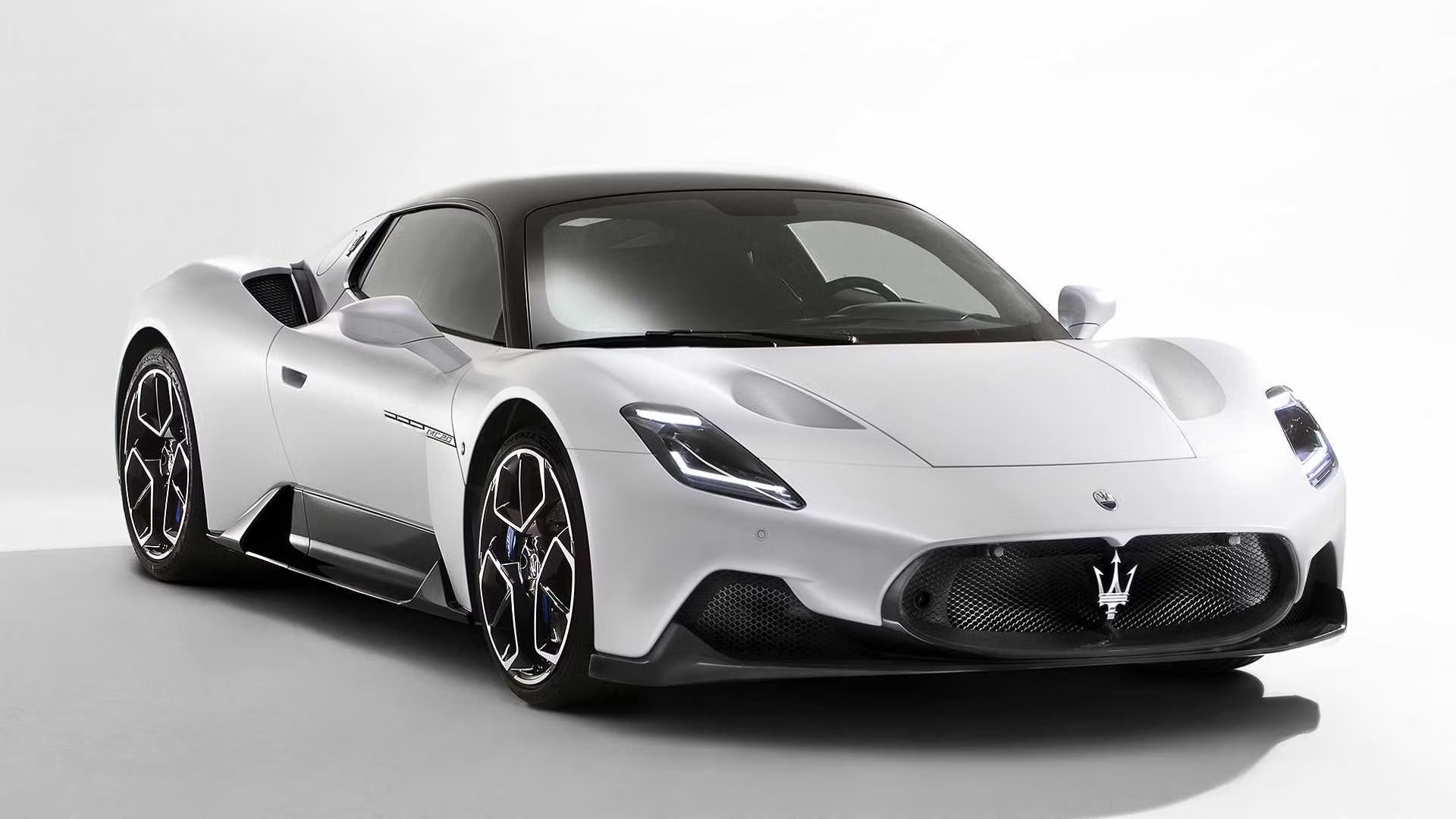
The battery technology is equally impressive, featuring a 92 kWh lithium-ion pack strategically integrated into the car’s carbon fiber monocoque chassis.
Designed to maintain the MC20’s iconic low-slung silhouette, the battery pack is arranged in a unique T-shape that preserves the car’s handling dynamics and weight distribution.
This innovative approach provides an estimated range of 310 miles, demonstrating that electric performance cars can offer both extreme performance and practical usability.
Exterior design continues Maserati’s tradition of creating some of the most beautiful sports cars.
While maintaining the core design language of the combustion-engine MC20, the Folgore features subtle aerodynamic modifications that optimize electric performance.
Carbon fiber is used extensively, both for weight reduction and as a design element that showcases the car’s technological sophistication. Active aerodynamic elements dynamically adjust to provide optimal stability and efficiency across different driving conditions.
The interior blends traditional Maserati luxury with futuristic electric vehicle technology. A driver-centric cockpit features a sophisticated digital interface that provides comprehensive performance and vehicle information.
Sustainable materials are used throughout the cabin, reflecting Maserati’s commitment to both luxury and environmental consciousness.
The racing-inspired seats provide maximum support while maintaining the comfort expected from a high-end Italian sports car.
Priced at approximately $250,000, the Maserati MC20 Folgore represents the brand’s vision for the future of high-performance automotive design.
It proves that electric vehicles can not only match but potentially surpass traditional sports cars in performance, design, and driving excitement.
11. Audi e-tron GT RS
The Audi e-tron GT RS represents a pinnacle of electric performance engineering, seamlessly blending Audi’s renowned quattro all-wheel-drive technology with cutting-edge electric vehicle design.
Developed in collaboration with Porsche, this electric grand tourer demonstrates Audi’s commitment to delivering high-performance electric vehicles that don’t compromise on driving excitement or technological sophistication.
At the heart of the e-tron GT RS is a sophisticated dual-motor electric powertrain that generates an impressive 637 horsepower in its most aggressive overboost mode.
This advanced system enables the car to accelerate from 0 to 60 mph in a mere 3.1 seconds, delivering performance that rivals traditional high-end sports cars.
The powertrain utilizes an 800-volt architecture that allows for incredibly fast charging up to 270 kW on compatible DC fast-charging stations making long-distance electric performance driving more practical than ever before.
The car’s battery system is a marvel of engineering, featuring a 93.4 kWh battery pack strategically integrated into the vehicle’s floor.
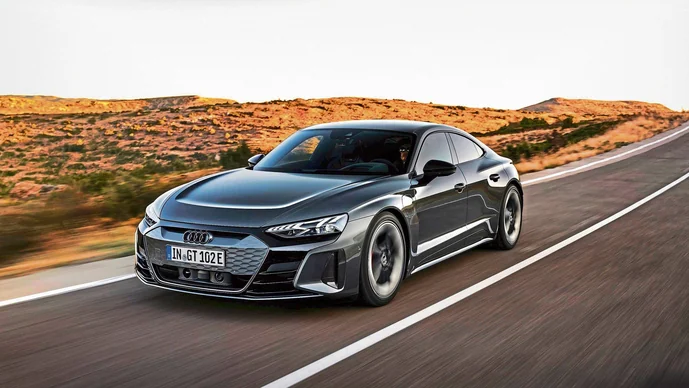
This placement provides an optimal center of gravity and weight distribution, ensuring exceptional handling characteristics.
The advanced thermal management system allows for repeated high-performance launches without degrading battery performance, a critical consideration for enthusiasts who enjoy track driving or spirited road use.
Exterior design reflects Audi’s progressive approach to automotive aesthetics, with a sleek, aerodynamic profile that manages to be both aggressive and elegant.
The distinctive LED lighting, including a fully digital matrix design, provides both exceptional visibility and a futuristic visual signature.
Extensive use of lightweight materials, including aluminum and carbon fiber reinforced polymer, ensures the e-tron GT RS maintains an impressive power-to-weight ratio while maximizing efficiency.
The interior is a testament to Audi’s commitment to sustainable luxury. Approximately 85% of the interior surfaces are made from recycled materials, without compromising on the premium feel Audi is known for.
A curved digital instrument cluster and central touchscreen provide comprehensive vehicle information, while the driver-focused cockpit ensures an engaging driving experience. The seats, made from recycled materials, provide both exceptional support and comfort.
Priced at approximately $142,400, the Audi e-tron GT RS is more than just an electric vehicle it’s a statement about the future of high-performance automotive design.
It proves that electric vehicles can deliver the same level of excitement, performance, and emotional connection that enthusiasts have long appreciated in traditional sports cars.
12. Fisker Karma Revero GT
The Fisker Karma Revero GT represents a unique approach to electric vehicle design, blending plug-in hybrid technology with luxurious grand touring styling.
Revived from the original Karma Fisker concept, the Revero GT showcases an innovative approach to sustainable high-performance transportation that challenges traditional automotive engineering paradigms.
Powered by a sophisticated extended-range electric powertrain, the Revero GT features two electric motors generating a combined 536 horsepower.
The vehicle utilizes a unique series hybrid architecture that allows for both all-electric driving and extended-range capabilities through a gasoline generator.
This approach provides exceptional flexibility, with an all-electric range of approximately 80 miles and a total range of over 300 miles when the gasoline generator is engaged.
The car’s exterior design is a work of art, featuring sweeping lines and a low-slung profile that pays homage to classic grand touring cars while incorporating modern sustainable design principles.
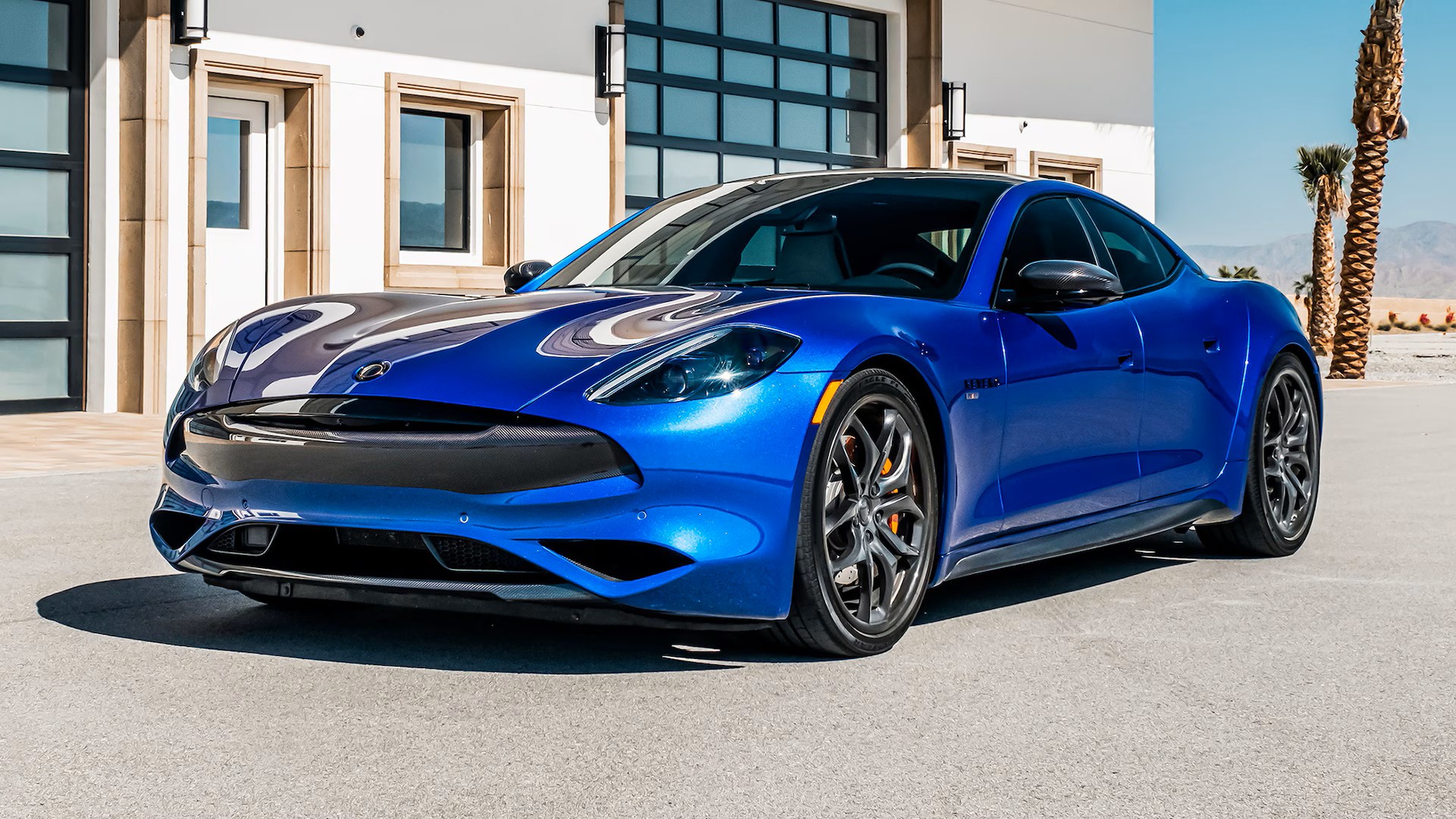
Solar panels integrated into the roof can generate additional electrical energy, providing a small but meaningful contribution to the vehicle’s efficiency.
The use of sustainable materials extends throughout the vehicle, with unique options like leather alternatives made from recycled materials and reclaimed wood trim.
An advanced solar roof option allows for additional energy generation, potentially adding up to 1,500 miles of electric driving per year under optimal conditions.
The battery system features innovative cooling technologies and an advanced battery management system that ensures long-term performance and reliability.
The plug-in hybrid architecture provides exceptional versatility, allowing drivers to switch between all-electric and hybrid modes seamlessly.
The interior of the Revero GT is a testament to luxury and sustainable design. A driver-focused cockpit features a large central touchscreen and digital instrument cluster, providing comprehensive vehicle information.
The use of recycled and sustainable materials doesn’t compromise on luxury, with premium finishes and advanced sound insulation creating an exceptional driving environment.
Priced at approximately $145,000, the Fisker Karma Revero GT offers a unique alternative in the electric vehicle market.
It represents an innovative approach to sustainable high-performance transportation, bridging the gap between all-electric vehicles and traditional plug-in hybrid technologies.
Also Read: 10 Affordable Cars With Industry-Leading Airbag Systems

